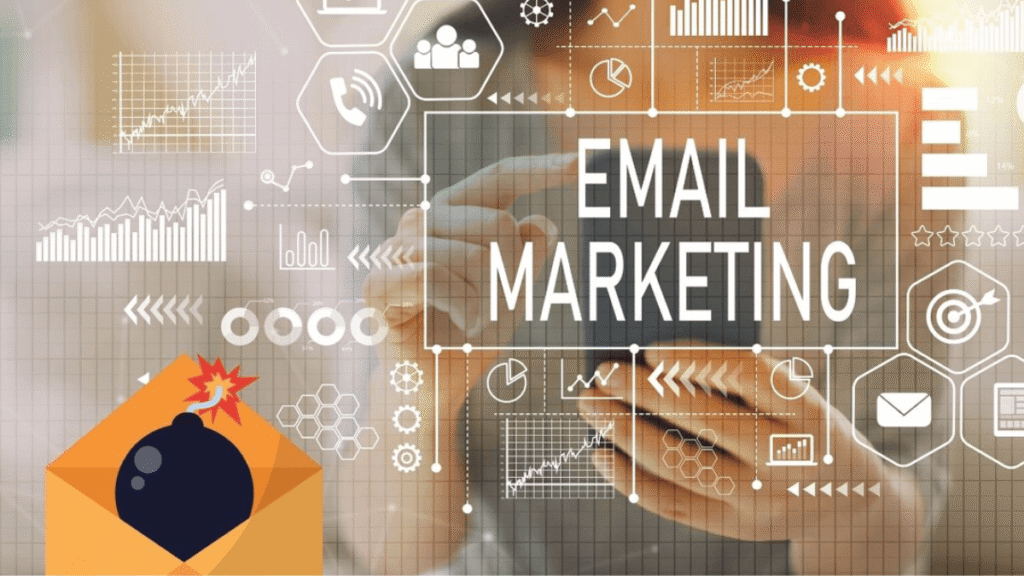In 2025, consumers expect seamless, personalized experiences across every platform they use. Traditional single-channel marketing is no longer sufficient. Businesses that thrive in today’s environment are those that have embraced omnichannel marketing to create unified brand experiences across all touchpoints.
This comprehensive guide breaks down the principles, tools, trends, and strategies you need to implement an effective omnichannel marketing plan in 2025.
What is Omnichannel Marketing?
Omnichannel marketing is a strategy that integrates all customer touchpoints—both online and offline—to deliver a cohesive, personalized brand experience. Unlike multichannel marketing, which simply uses multiple platforms, omnichannel ensures that all those platforms work together harmoniously.
Key Features:
- Unified messaging across channels
- Consistent brand experience
- Real-time personalization
- Cross-channel customer journey tracking
Why Omnichannel Marketing Matters in 2025
1. Changing Consumer Behavior
Customers switch between devices and platforms multiple times before making a purchase. A brand needs to be present and consistent across all touchpoints.
2. Data Integration and AI
Advancements in AI and big data allow brands to collect and act on customer behavior data in real time.
3. Competitive Advantage
Businesses that offer a seamless experience see higher retention, better conversion rates, and increased brand loyalty.
Core Channels in an Omnichannel Strategy
1. Website and Landing Pages
Must be mobile-friendly, fast-loading, and personalized based on behavior.
2. Email Marketing

Still one of the most effective channels when automated and segmented.
3. Social Media
Use Instagram, TikTok, LinkedIn, and Facebook for engagement, retargeting, and content distribution.
4. Mobile Apps
Provide direct communication, push notifications, and loyalty features.
5. SMS and Messaging Apps
Instant communication through WhatsApp, Messenger, or SMS for time-sensitive offers.
6. In-Store Experience
QR codes, digital kiosks, and personalized service make brick-and-mortar stores part of the digital journey.
7. Call Centers and Customer Support
Customer service should have access to previous interactions across all platforms.
Key Components of a Successful Omnichannel Strategy
1. Customer Data Integration
Use CDPs (Customer Data Platforms) to unify data from all sources.
2. Consistent Branding
Ensure logos, tone, and value proposition are uniform across every channel.
3. Personalization at Scale
Utilize AI and machine learning to customize messages, product suggestions, and offers in real-time.
4. Seamless Transition Between Channels
Allow users to pick up where they left off, whether on mobile, desktop, or in-store.
5. Automation
Use automation tools to handle workflows, email sequences, retargeting, and customer journeys.
Omnichannel Trends to Watch in 2025
AI-Powered Real-Time Personalization
AI now predicts what customers want before they ask, serving dynamic content based on behavior.
Voice and Conversational Commerce
Voice assistants and chatbots are handling more customer queries and even processing sales.
Unified Commerce
Integrating inventory, POS systems, and e-commerce platforms for real-time data sharing.
AR and VR Integration
Augmented reality tools are enhancing the customer journey online and in-store.
Privacy-First Marketing
Brands must deliver personalization without violating data privacy. First-party data is essential.
How to Build an Omnichannel Marketing Strategy
Step 1: Understand Your Audience
- Use analytics tools to map the customer journey
- Segment audiences by behavior, intent, and preferences
Step 2: Choose the Right Channels
- Identify where your audience spends the most time
- Focus on 3-5 core channels to start
Step 3: Align Messaging and Branding
- Develop a brand voice guide
- Customize the message for each channel while maintaining consistency
Step 4: Invest in the Right Tools
- CRM: Salesforce, HubSpot
- CDP: Segment, Bloomreach
- Marketing Automation: ActiveCampaign, Klaviyo
- Analytics: Google Analytics 4, Mixpanel
Step 5: Create a Content Calendar
Plan content across all channels to keep messaging consistent and timely.
Step 6: Test and Optimize

- A/B test subject lines, creatives, and CTAs
- Use heatmaps and session recordings to evaluate performance
Measuring Omnichannel Success
Key Metrics:
- Customer Retention Rate
- Lifetime Value (LTV)
- Conversion Rate by Channel
- Engagement Rate
- Revenue Attribution
- Channel ROI
Common Mistakes to Avoid
- Treating each channel in isolation
- Overwhelming customers with inconsistent messages
- Not having a mobile-first approach
- Ignoring data privacy and consent
- Lack of internal alignment across departments
Real-World Example
Retail Brand XYZ implemented an omnichannel strategy by integrating their mobile app, website, in-store POS, and social media. They used AI to offer personalized discounts through SMS when customers were near a store and saw a 35% increase in foot traffic and a 22% rise in repeat purchases within six months.
Benefits of Omnichannel Marketing
- Enhanced customer experience
- Higher conversion and retention rates
- Better data and customer insights
- Streamlined operations across departments
Also Read: The Ultimate Guide To Social Media Marketing In 2025
Conclusion
Omnichannel marketing in 2025 is no longer a luxury—it’s a necessity. With technological advancements and rising customer expectations, businesses must provide seamless, personalized experiences across all platforms. By integrating tools, aligning messaging, and focusing on the customer journey, you can drive loyalty, boost engagement, and increase revenue. The time to build your omnichannel strategy is now.
FAQs
1. How is omnichannel different from multichannel marketing?
Multichannel involves using multiple platforms separately, while omnichannel ensures those platforms work together cohesively for a seamless user experience.
2. What is the first step in creating an omnichannel strategy?
Understanding your audience and mapping out their customer journey is the foundational step.
3. Do small businesses need omnichannel marketing?
Yes. Even small businesses benefit from consistent branding and integrated communication across platforms.
4. How much does it cost to implement an omnichannel strategy?
Costs vary widely depending on the tools and channels used, but many platforms offer scalable solutions.
5. What industries benefit most from omnichannel marketing?
Retail, e-commerce, finance, healthcare, hospitality, and education benefit significantly from omnichannel strategies.


